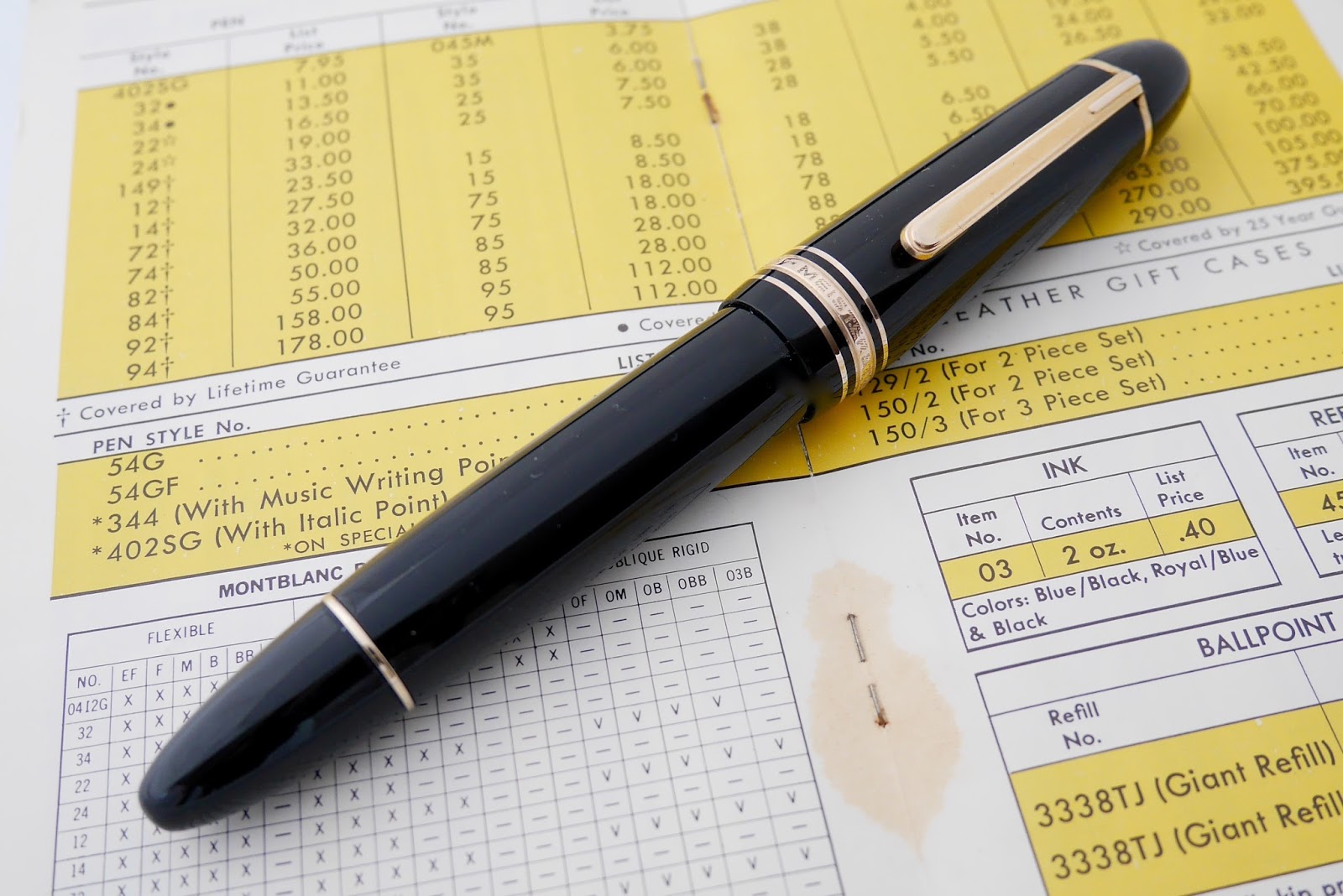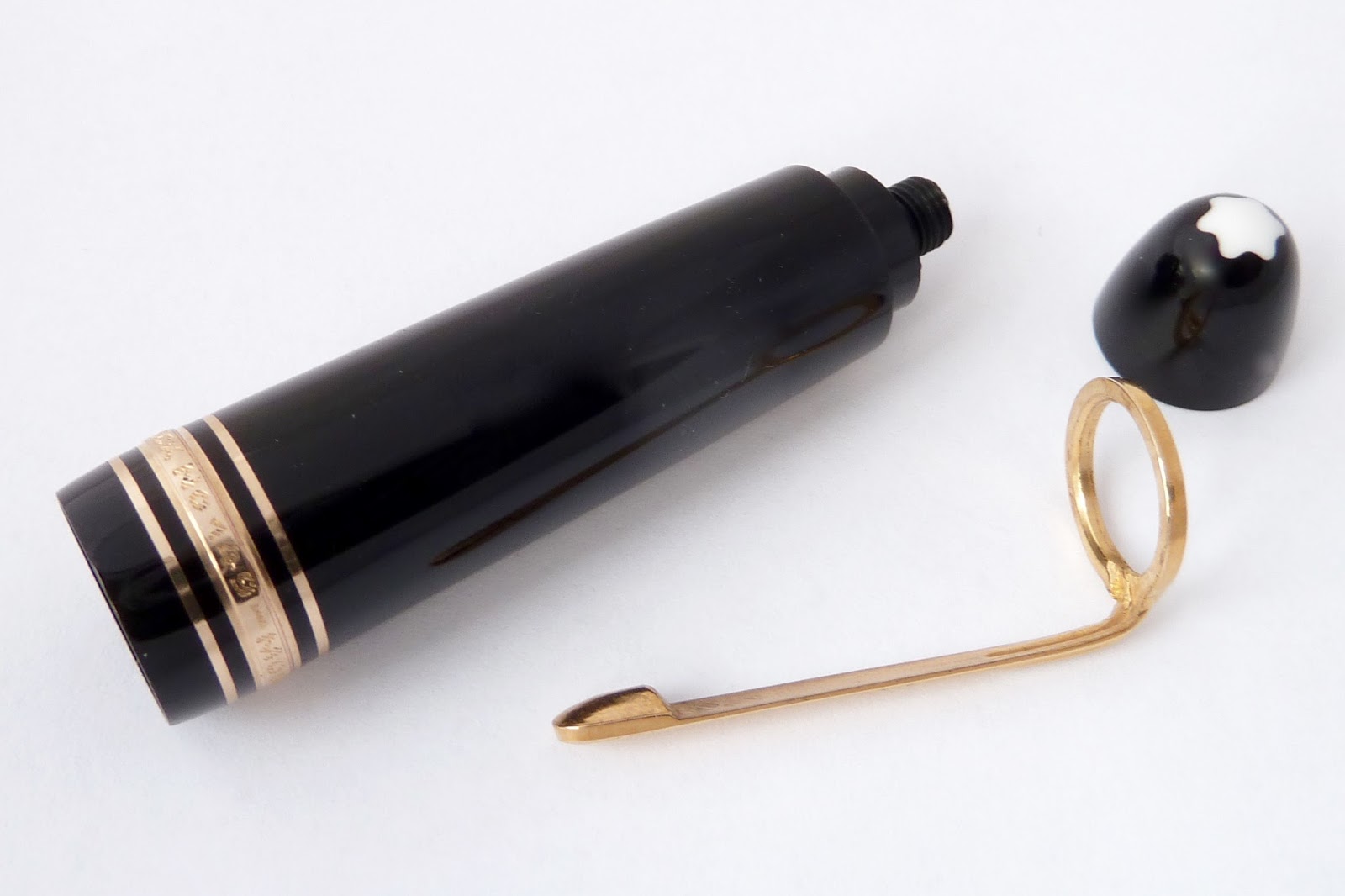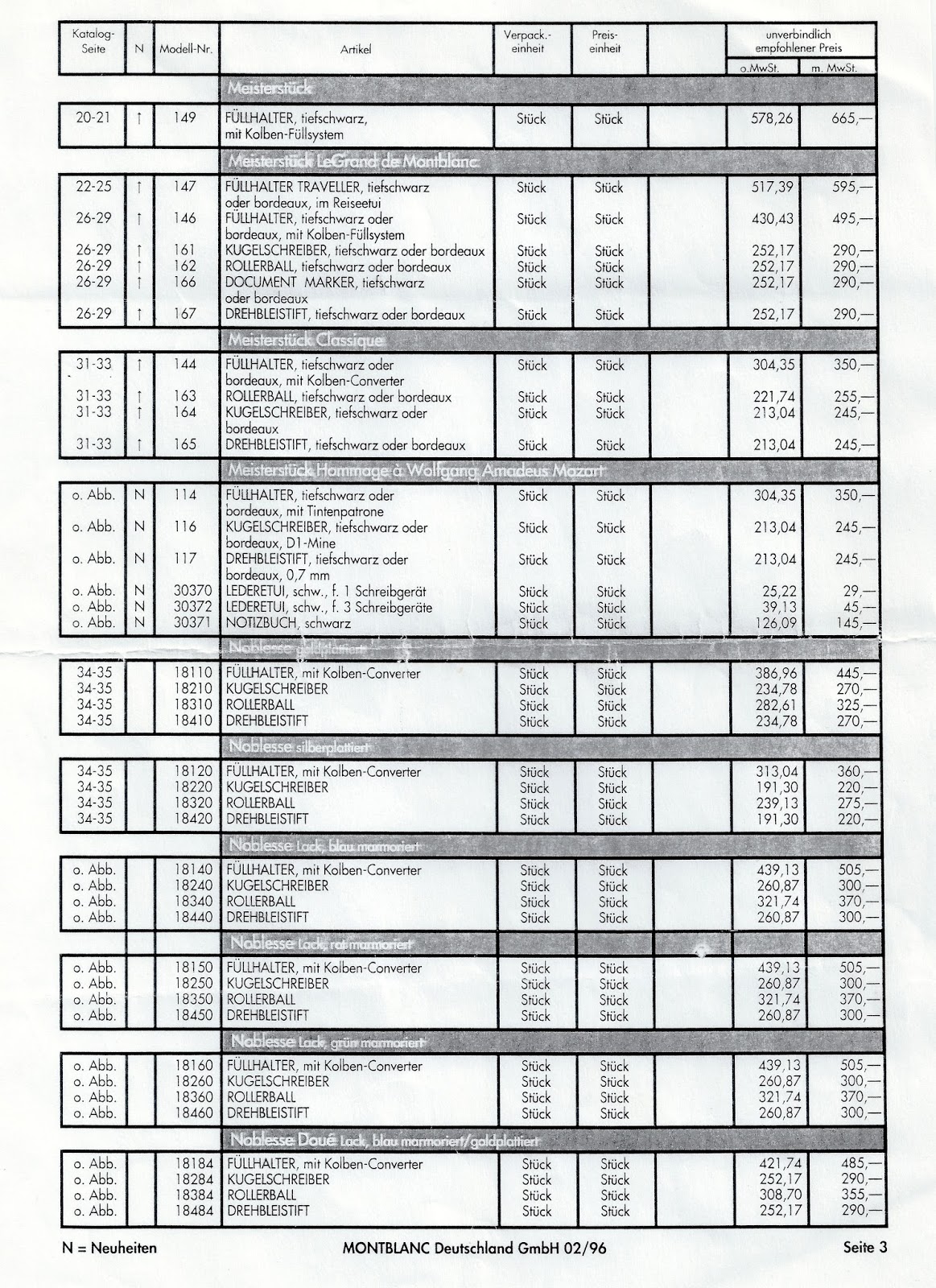A few 134 pens from c. 1937-1949. Note the different clips, cap tops & bands as well as the ink windows.
This appears to be an early, original design 134 Meisterstück from c. 1937 - 1942 with the typical Meisterstück tie-clip, long cap top, long ink window and raised cap band.
Montblanc Meisterstück 136 bought in October 1941 in Cologne, Germany for 25,50 Mark. The original receipt is still with the pen.
Wartime Meisterstück 134 & 136 from c. 1942 - 1946. Due to the restricted use of metals no actual cap band was used on those pens. The caps show a MONTBLANC-MEISTERSTÜCK engraving instead. During this time steel nibs were used.
Originally the tear-drop clip was used on Meisterstück pens between 1930 - 1934 but is also found on many pens produced during wartime.
A selection of Meisterstück 136 pens from c. 1937 - 1949 with a variation of different clips and cap bands. Early pens show a long ink window and long cap top, while later pens have a short and more streamlined cap top and medium or short ink windows.
A set of Meisterstück 134 and 136 pens with flat and smooth cap bands and a mix of features from different periods of time.






















































































































































































































































































































































